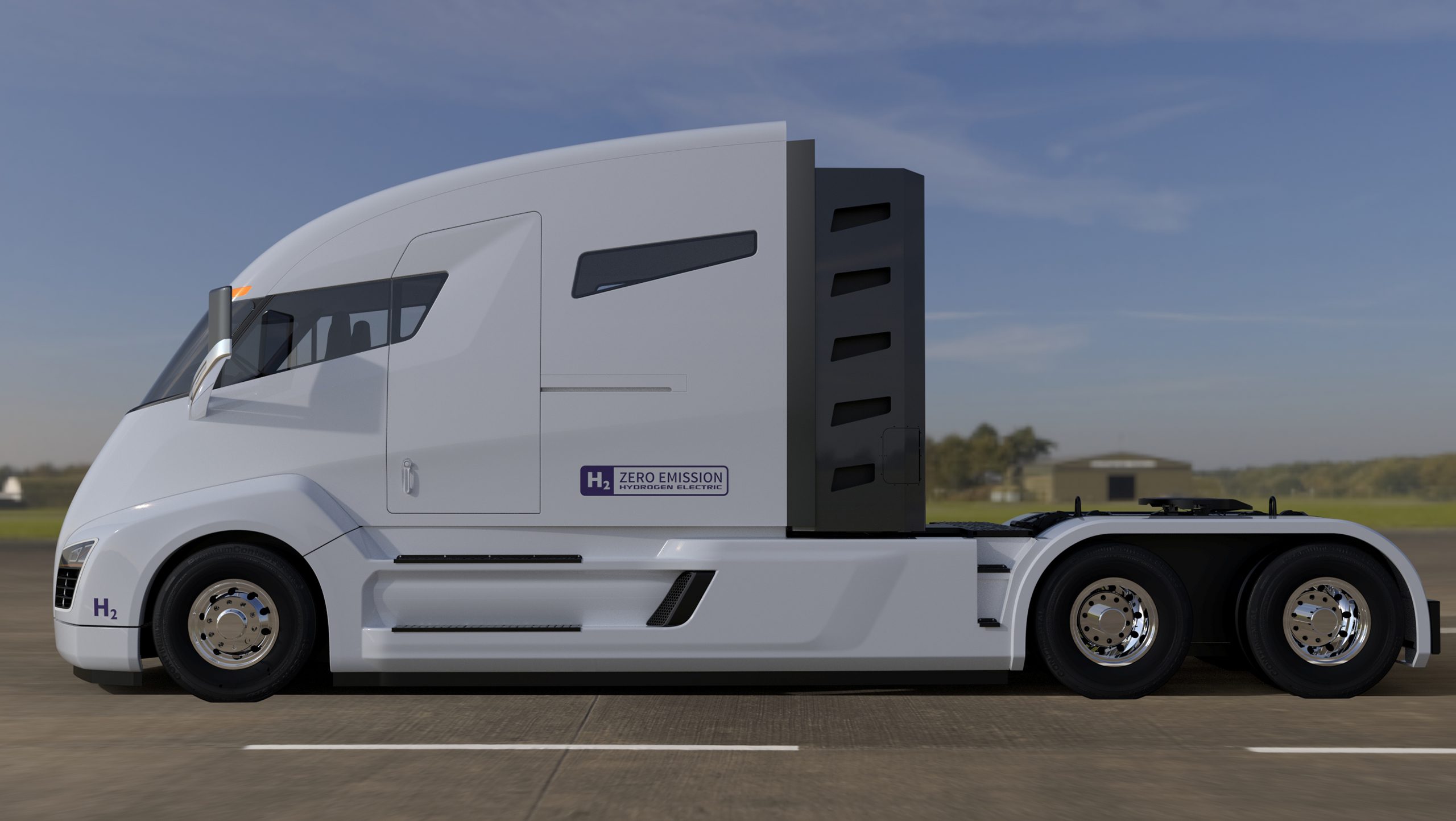20% of all global emissions come from transport – cars, planes, trains, ships, trains and buses. The International Energy Agency predicts emissions will continue to increase unless there is a rapid shift away from using fossil fuels to power transport vehicles and new technology and cleaner fuels are adopted, quickly.

Hydrogen is a clean gas that produces only water as an emission when used as fuel for cars or heavy transport.
To reach emission reduction targets, it has been identified that a combination of plug-in hybrid electric vehicles (PHEVs), Battery Electric Vehicles (BEVs), and Fuel Cell Electric Vehicles (FCEVs) will be required to reduce transport emissions. FCEVs are often powered by hydrogen gas.
Batteries for electric vehicles are necessarily heavy, which reduces the freight load available to heavy vehicles. Fuel cells, powered by hydrogen gas, are much lighter giving vehicles greater range and carrying capacity.
The Hydrogen Council predicts that by 2050, hydrogen could power a global fleet of more than 400 million cars, 15 to 20 million trucks, and around 5 million buses, which constitute on average 20% to 25% of existing vehicle numbers. Hydrogen could also replace 5% of the world’s fuel supply to airplanes and freight ships by 2050.
The good news is that hydrogen transport technology is already on the road to becoming the fuel of the future.
Hydrogen and cars
With renewable and clean hydrogen, such as the type HESC could produce, FCEVs emit no CO2 and require fewer resources and energy in the manufacturing process than BEVs.
Three models of FCEVs are already offered commercially in Japan, South Korea, California, and Germany and the Hydrogen Council predicts FCEV cars could make up 3% of new vehicle sales in 2030.
Buses
FCEV buses will be able to go longer distances, operate with fewer interruptions and only exhaust water, compared to current models.
An Australian consortium by the name of H2OzBus Project aims to deploy 100 hydrogen-powered bus’ into Australia’s public transport network, with the long-term intention of a worldwide roll-out.
The International Association for Public Transport says fuel cell buses are expected to have a global market share of 2 per cent in 2020 and 10 per cent in 2030.
Trains
Rail engineering company Altsom has developed a commercial hydrogen-powered train, which was tested in Germany for 18 months, and is to now be run across Austria’s rail network.
The Austrian national rail operator is considering replacing diesel trains with the new hydrogen-powered design.
Alstom has also sold 41 hydrogen-powered trains to German operators and has begun work on the first hydrogen train refuelling station in Germany.
Trucks
The International Energy Agency predicts truck emissions that account for roughly 25% of CO2 emissions from the transportation sector today, will grow to 35 to 40% by 2050.
Hydrogen is advantageous for vehicles like trucks with long-range, mileage and payloads. Where 300km or more is being travelled, FCEV’s become less expensive to use than BEV’s.
Due to their high mileage and heavyweights, a hydrogen fuel cell truck fleet of 350,000 would have the same abatement potential as almost 2.5 million FCEVs in the passenger car segment.
Trucks for heavy and long-haul segments are expected to be commercially available within the next five years thanks to brands such as Toyota, Hyundai and Nikola Motors.
The fuel of the future
Hydrogen technology in combination with other low emission technologies plays a significant role in reducing global CO2 emissions and reaching global climate goals.
There is currently tremendous hydrogen innovation and the world is talking about hydrogen potential. HESC Project Partners acknowledge that our common challenge is climate change and believes action is needed now. All forms of clean hydrogen can aid in transport decarbonisation.
Sources: